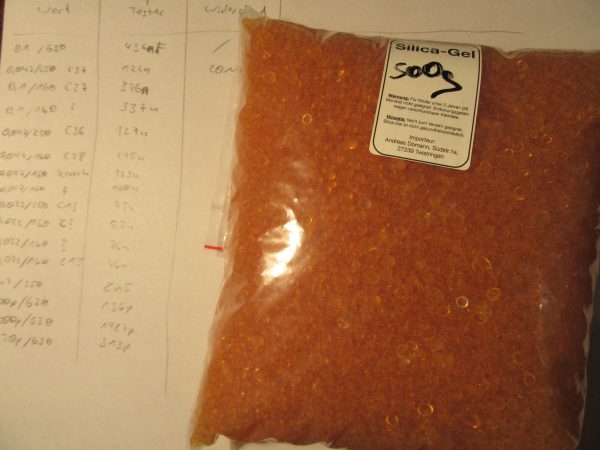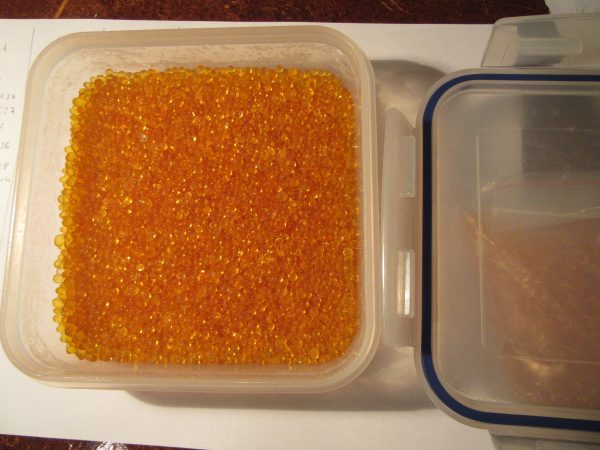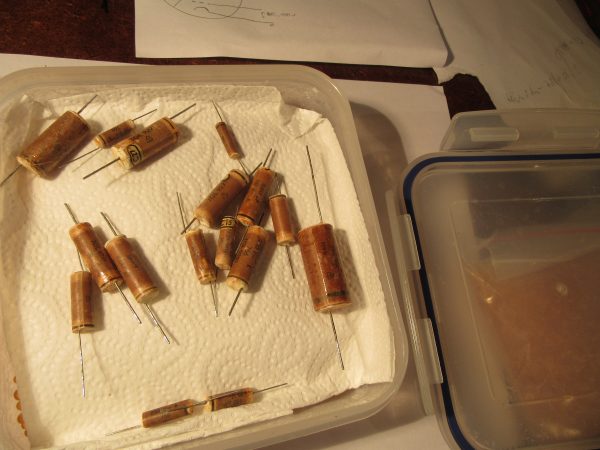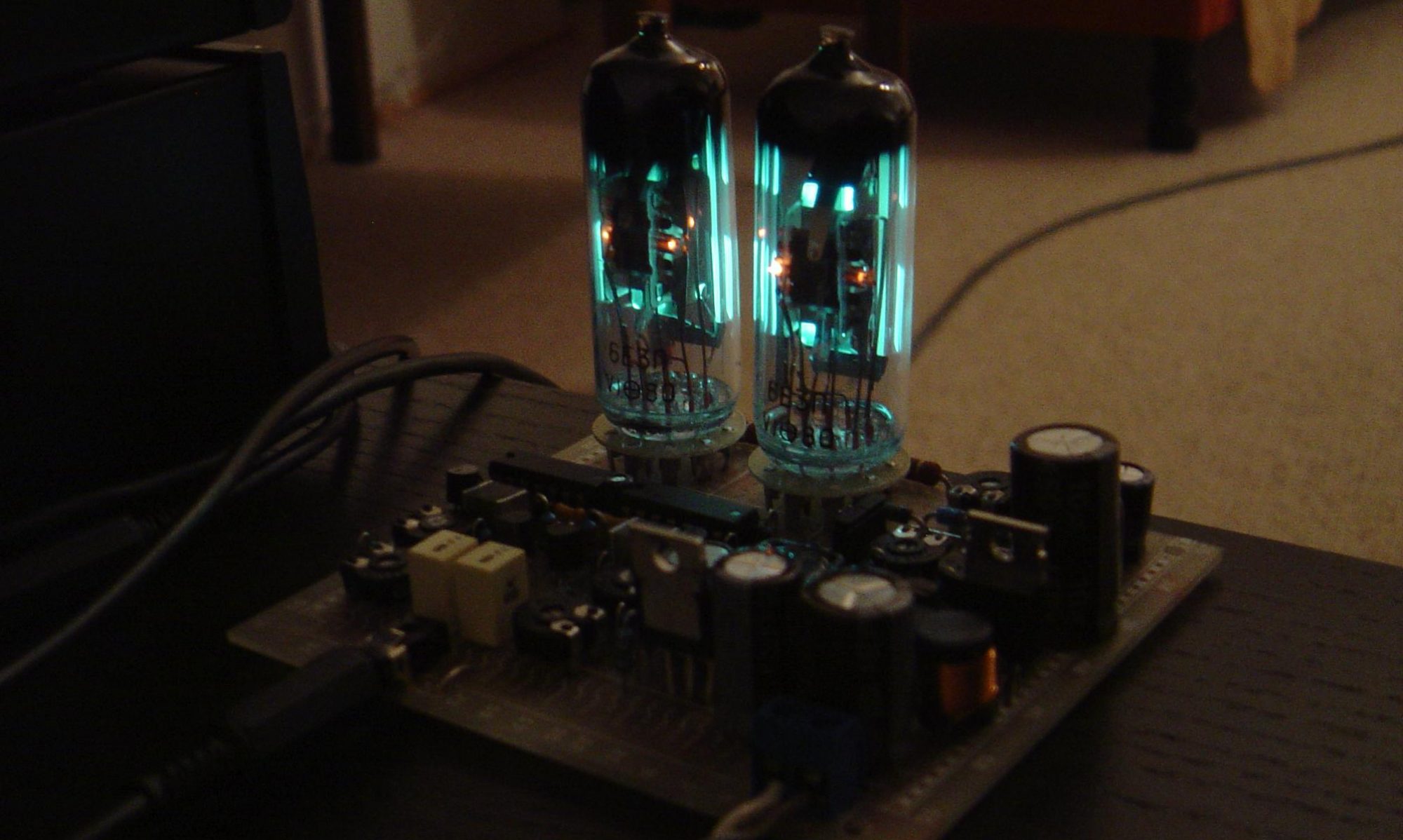Lately I had to replace almost all capacitors on all GDR tube radios and other equipment from the late 50s to early 70s. The problem is always the paper capacitors of the make “Koweg” (Kondensator Werk Görlitz). Over the years, these capacitors have aged and no longer meet the original specification, especially the leakage current. So far, I have always replaced them with long-life film capacitors. According to my observations, the basic problem of these capacitors is the sealing. At the end faces, this consists of something similar to PUR foam (polyurethane foam). However, this crumbles with time and is no longer present on old and thermally stressed specimens. The second part of the sealant is a varnish that has also become brittle over the years on this series. I suspect it is a nitro varnish. These are the remnants from the last restoration project:

In the past I simply put these capacitors into the electronic scrap, this time everything should be different. The royal road of any restoration is the preservation of the original substance and from this consideration a plan was born.
My very personal theory is that the paper is hygroscopic. Due to the problem of defective sealing, the paper absorbs moisture over time. Since the paper is insulation and dielectric, a different moisture content will greatly change the properties of the capacitor. So you have to dry the capacitor!
I came up with two viable ways to dry it, in a vacuum or with silica gel in a drying box. Silica gel is a drying agent that is commonly used in closed containers, into which you put the granules and the things you want to dry.

I ordered the granules on the Internet and chose a variant with moisture indicator. In this case, orange means dry, blue means moist. The granules can be regenerated in the oven and reused almost indefinitely.
This granulate now simply goes into an airtight plastic box.

Over it comes a paper towel and then the capacitors on top.

The whole thing now comes over the winter on the heater to further increase the steam pressure. I measured a relative humidity between 5% and 10% in the box.
Next year I will then measure the condensers and see if they have better characteristic values again. In addition, I will then describe here how I do the permanent sealing.

interessant:
mein vorschlag wäre ggf.mit den kondensator mit trafoöl im vakum
regenerieren.
Wie ging es weiter? Haben sich die Kondensatoren regenerieren und wieder versiegeln lassen?
Hallo Maik,
ich habe nach ca. 2 Jahren Trocknung mit Epoxydharz versiegelt wie geplant. Leider waren die Werte zwar etwas aber nicht wesentlich besser. Es kann an meinen Messmitteln liegen oder das Trocknen hat schlicht nicht geholfen. Ich muss da noch mal tiefer einsteigen in das Thema, wie man Kondensatoren auf Herz und Nieren prüft. Und Leider habe ich seit einiger Zeit wenig Mußestunden, um den Beitrag zu ergänzen, sorry.
Grüße,
Uwe